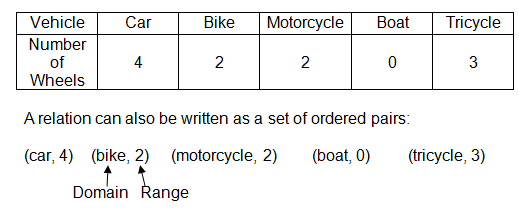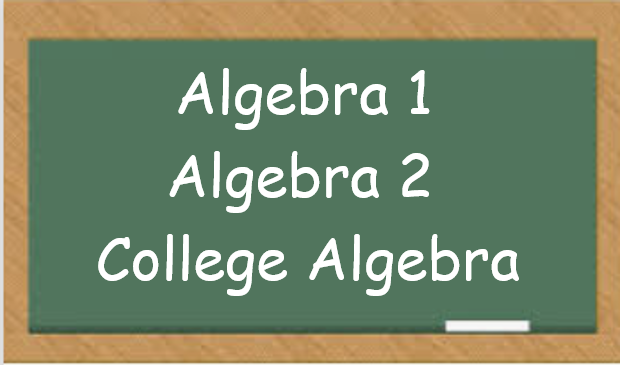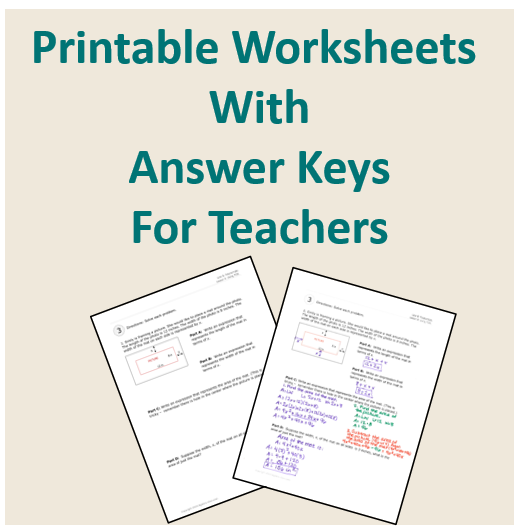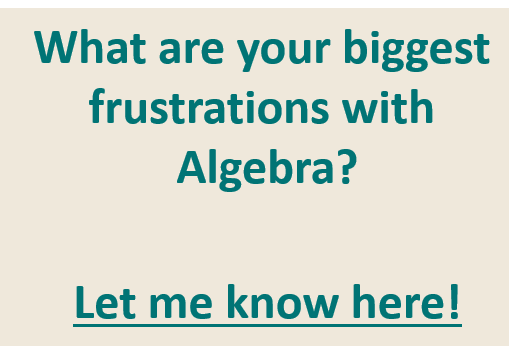Introduction to Algebraic Relations and Functions
Before we jump into discussing functions, we're going to take a step back and talk about algebraic relations and a few other vocabulary words. I know that you may be anxious to get to the "algebra problems", but this page contains a lot of vocabulary that you will need to understand the remainder of the unit. So, make sure you take the time to read and understand this page before moving on.
A relation is a set of ordered pairs.
The first item in an ordered pair is identified as the domain. The second item in the ordered pair is identified as the range. Let's take a look at a couple of examples:
Example 1 - Using a Table to Analyze Relations
For the first example, I'm going to show you something that you are familiar with. We all know there is a relationship between a vehicle and the number of wheels that it contains.
A relation can be written in the form of a table:

As you know, in Algebra, we will not be dealing with vehicles as a domain. I used this example just to define the vocabulary because it is something that you are familiar with.
Now, I want you to think of a Vending Machine. How about the classic vending machine that you see in office buildings, stores, schools... where you can choose chips, crackers or candy.
You put in 75 cents and out pops your bag of chips. Or... you put in $1.00 (Yes... aren't they getting expensive these days?) and out pops your Hershey Bar. There is a relationship between the amount of money that you put in the machine and what comes out!
This is exactly what the "Math World" is like. It's a ton of little vending machines that "swallow" an input number (domain) and pops out another number (range).
Let's look at a more mathematical example.
Example 2 - Relations and Ordered Pairs
The following is an algebraic relation that we will call b.
b:{(2,4) (3,6) (4,8) (5, 10)}
The domain is: 2, 3, 4, 5 (These are all the x values of the ordered pair)
The range is: 4, 6, 8, 10 (These are all the y values of the ordered pair)
The domain contains the independent variable and the range contains the dependent variable. This means that the value of the range depends on the domain.
Think about the vending machine: What comes out of the machine (range) depends on what you put in (domain). You can't put in a nickel and expect a chocolate bar to pop out!
Ok... enough vocabulary about Relations. Now we want to focus on a special type of relation called a Function. Click here to view the next lesson on functions.

Need More Help With Your Algebra Studies?
Get access to hundreds of video examples and practice problems with your subscription!
Click here for more information on our affordable subscription options.
Not ready to subscribe? Register for our FREE Pre-Algebra Refresher course.





Comments
We would love to hear what you have to say about this page!